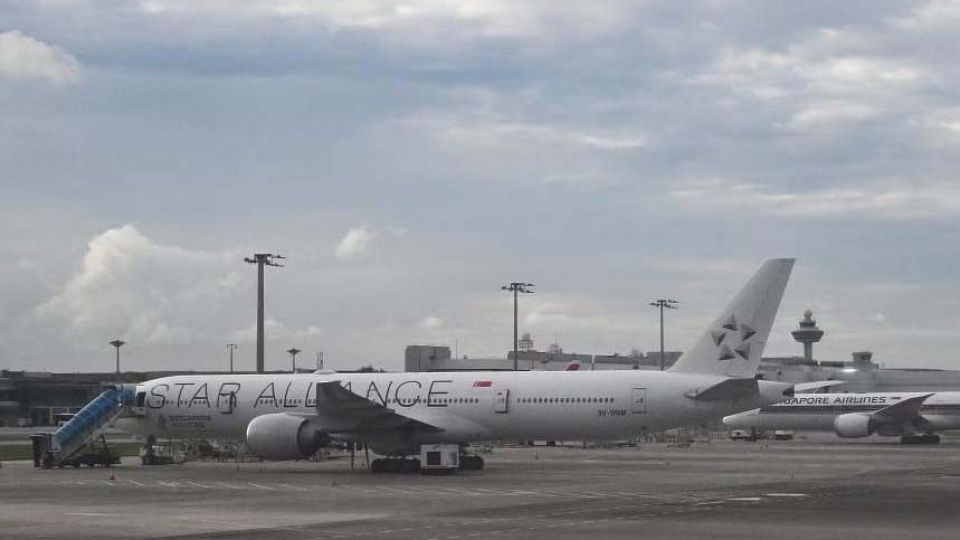August 2, 2024
SINGAPORE – Meal services on Singapore Airlines (SIA) flights will no longer be suspended automatically when the seat-belt sign lights up, unless pilots deem it necessary.
The national carrier has reverted to standard in-flight procedures 10 weeks after a man died and dozens were injured on the turbulence-hit Flight SQ321.
An SIA spokesperson told The Straits Times that the airline on Aug 1 ended a safety time-out that was imposed after the turbulence incident on May 21.
This means hot beverages, including soup, will continue to not be served when the seat-belt sign is switched on, but the rest of the meal and drink service can carry on at the discretion of the crew. This was not the case under the tighter rules.
Under the stricter protocols, cabin crew also had to take their seats and fasten their seat belts when the seat-belt sign was lit. Now, the pilots may ask cabin crew to return to their seats and suspend service, where necessary.
The carrier said its pilots will continue to decide whether to suspend or continue with in-flight service, depending on their assessment of weather and operational conditions.
SIA took a more cautious approach to managing turbulence in the air shortly after the SQ321 incident.
Reports about the modified service routines came out on May 23, two days after the embattled flight from London to Singapore, which experienced sudden extreme turbulence over the Irrawaddy Basin in Myanmar during breakfast service.
Following the incident, SIA said stricter safety measures were taken as a precaution, and gave the company time to thoroughly review its turbulence management protocols, which it has verified to be in line with industry best practices.
Over the last four weeks, all the airline’s pilots and cabin crew have undergone additional refresher courses to reinforce these procedures, covering topics like how to recognise and handle risks associated with turbulence and how to assist passengers in such instances.
SIA said it also took the chance to find ways to improve safety on board its flights. Periodic reminders to passengers are now issued via the in-flight entertainment system screens to reinforce the importance of keeping their seat belts fastened while seated.
“Customers should always follow the instructions of our pilots and cabin crew, and keep their seat belts fastened while seated at all times,” the airline said.
Mr Alan Tan, president of the Singapore Airlines Staff Union, which represents the carrier’s cabin crew and ground workers, told ST that the union was briefed about the return to regular turbulence protocols in July.
He said it was good that things were back to business as usual, as there was a lot of feedback from in-flight managers that it was tough to complete meal services on shorter flights, such as those to Jakarta or Bangkok, under the tighter rules.
“Given that it was in place for about two months, I wouldn’t say it was really very disruptive,” Mr Tan added. “SIA has to provide a service, so we knew this would not be in place forever.”
ST reported previously that the stricter procedures imposed after the SQ321 incident had an impact on the carrier’s service offerings and drove up stress levels for cabin crew.
SIA cabin crew who had spoken to ST on condition of anonymity said pausing all service when the seat-belt sign came on meant working under time pressure, particularly on shorter regional flights.
On a full flight in economy class, meal service can take one to two hours to complete, barring any disruptions. Long-haul flights tend to have at least two meals served on board – one shortly after take-off, and one around two-and-a-half to three hours before landing.
Adjustments like removing after-take-off drinks were made to better manage time, and cabin crew said some passengers rated their service poorly because they did not understand the importance of the new procedures.
Asked about this, SIA said the general feedback from its customers and staff was that they understood the need for the safety time-out. The carrier declined to comment further about how its in-flight procedures may change going forward, citing the ongoing investigations.
A total of 211 passengers and 18 crew members were on board the Boeing 777-300ER plane that was hit by turbulence on May 21, which forced the pilots to make an emergency landing at Bangkok’s Suvarnabhumi Airport.
As at Aug 1, two passengers from that flight were still receiving medical care in a Bangkok hospital.


